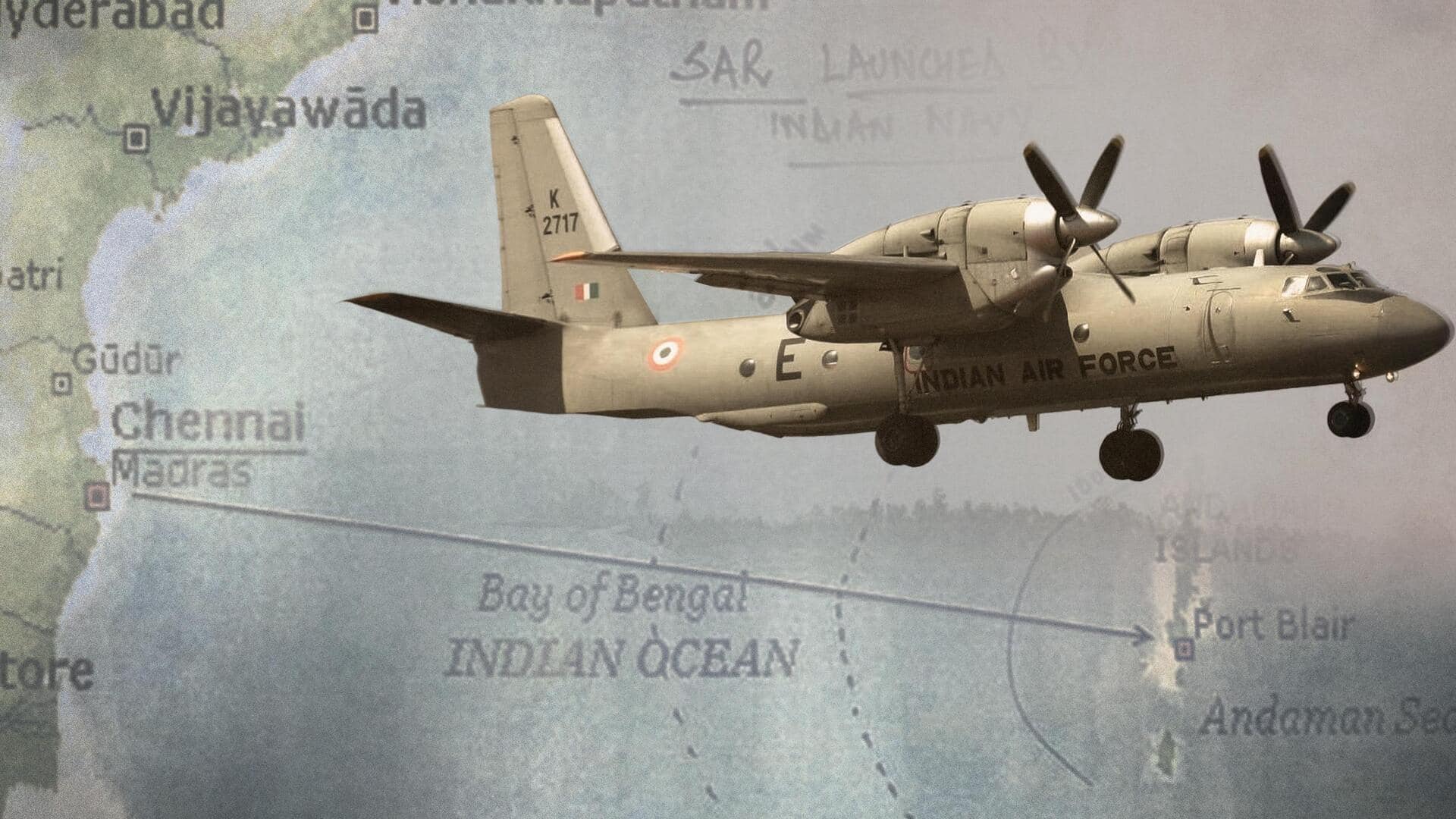
Mystery solved! Missing IAF plane's wreckage found after 8 years
What's the story
The long-standing mystery surrounding the disappearance of an Indian Air Force (IAF) An-32 transport aircraft in 2016 may finally have been solved. An autonomous utility vehicle (AUV) developed by the National Institute of Ocean Technology discovered debris from a crashed aircraft 310km off the Chennai coast. Photographs from the probe confirmed it to be the missing An-32 aircraft. The plane, which was carrying 29 personnel, including eight civilians, went missing over the Bay of Bengal during an operational mission.
Context
Why does this story matter?
On July 22, 2016, the An-32 took off from Tambaram, Chennai, intending to land at Port Blair in the Andaman and Nicobar Islands. Sixteen minutes after take-off, the pilot made his last call, stating, "Everything is normal," before rapidly losing altitude and disappearing from radar. This discovery provides closure for the families of those on board the missing aircraft, although the cause of the crash remains unknown.
Details
Deep-sea search identifies aircraft debris
Using multi-beam SONAR, synthetic aperture SONAR, and high-resolution photography, the AUV conducted a deep-sea exploration at a depth of 3,400 meters. The payloads identified debris from a crashed aircraft on the sea bed, and upon analysis, the photographs were found to match the An-32 aircraft. Experts believe that the debris likely belongs to the missing An-32, as no other aircraft crashed at that site or in that area.
Details
Search operation scrutinized images
In a statement, the Defence Ministry said, "The search images were scrutinized and found to be consistent with an An-32 aircraft." "This discovery at the probable crash site, with no other recorded history of any other missing aircraft report in the same area, points to the debris possibly belonging to the crashed IAF An-32 (K-2743)." According to reports, the air traffic controllers lost radar contact with the plane, which plunged from 23,000 feet, 280 km out at sea from Chennai.
Insights
India's biggest search operation lacked essential equipment
In response to the disappearance, the IAF and Navy launched India's largest search operation, involving the Navy's Dornier aircraft and 11 ships. A preliminary investigation revealed that the An-32 was not carrying essential equipment like an underwater locator beacon in its black box, making the search for the wreckage extremely difficult. The underwater locator beacon is designed to emit an electronic signal for at least a month after a crash and is used on all civilian aircraft.